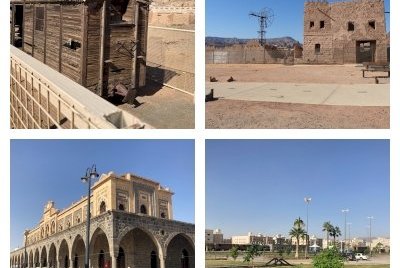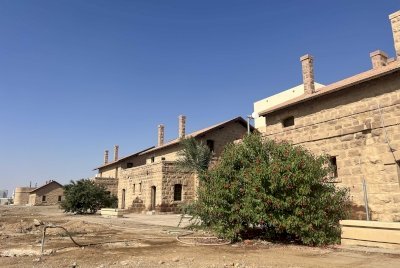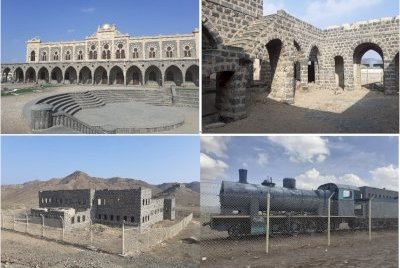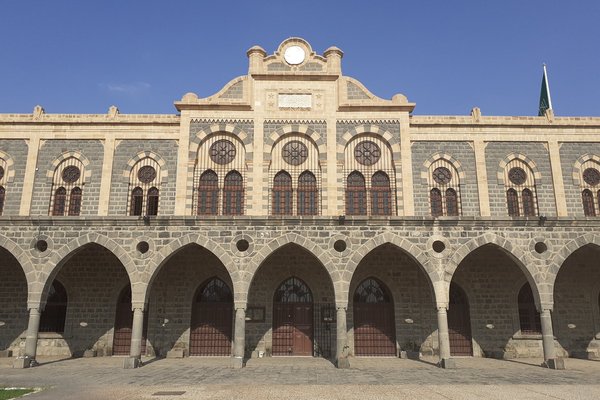Saudi Arabia
Hejaz Railway
Site Info
Official Information
- Full Name
- Hejaz Railway (ID: 6026)
- Country
- Saudi Arabia
- Status
-
On tentative list 2015
Site history
History of Hejaz Railway
- 2015: Added to Tentative List
- Added to tentative list
- Type
- Cultural
- Criteria
Links
- UNESCO
- whc.unesco.org
All Links
UNESCO.org
- whc.unesco.org — whc.unesco.org
Community Information
- Community Category
- Human activity: Transport and Trade
Travel Information
Recent Connections
News
No news.
Recent Visitors
Visitors of Hejaz Railway
- Alexander Lehmann
- Ammon Watkins
- Ask Gudmundsen
- Clyde
- Els Slots
- George Gdanski
- Jarek Pokrzywnicki
- Jean Lecaillon
- John Smaranda
- Marcobrey
- Martina Rúčková
- michaelsballard
- Nick Kuzmyak
- PabloNorte
- Petri Jurescu
- Philipp Peterer
- Piotr Wasil
- Randi Thomsen
- Solivagant
- Svein Elias
- Szabolcs Mosonyi
- Szucs Tamas
- Thomas Buechler
- Tony H.
- Wojciech Fedoruk
- Zach
Community Reviews
Show full reviews
Nabatean Hegra may be its main tourist attraction nowadays, but Saudi Arabia’s Unique Selling Point is being the custodian of the two holy sites of Islam: Mecca and Medina. No less than four TWHS are directly related to the pilgrimages to these sites. There are three Hajj Road serial transnational sites, of which the Darb Zubaydah seems to be prepared at the moment as a joint nomination between Saudi Arabia and Iraq. And there’s also the Hejaz Railway, which despite the “transport” theme also is closely associated with the Islamic pilgrimage route. The Islamic pilgrimage routes probably are the closest the Saudis will get to putting forward its holy sites as WHS (Mecca’s Kaaba is #9 of our Missing List).
My first encounter with this subject was at the National Museum of Saudi Arabia in Riyadh. At the moment they are hosting a special exhibition called ‘Hijrah’. It tells the story of how the Prophet Mohammed fled from Mecca to Medina to avoid persecution. Although this seems like a difficult and intangible theme, they found clever solutions to bring the message across also to non-Muslim visitors. Large video screens show his journey day by day and the desolate landscapes he passed through, alternated with works by modern artists (among them many female).
The Hejaz Railway entered Saudi Arabia from the northwest, bringing pilgrims from Turkey and Syria – essentially it was the early 20th century version of the Syrian Hajj Road. The remains of the old railway station …
Keep reading 0 comments
Hejaz Railway is an interesting nomination and I would say my favourite in Saudi out of the four large serial ones (the three others are pilgrimage hajj routes). It's a coherent collection of sites with an interesting story and many places to see in still quite decent shape. The Hejaz railway was a narrow gauge railway, named after the Hijaz region of present-day Saudi Arabia through which it ran. It connected Damascus in present-day Syria with Medina in Saudi Arabia, with a branch line to Haifa (present-day Israel). It was part of the Ottoman railway network and its original purpose was to connect Damascus and Mecca with Istanbul. The builders' grandiose plans were thwarted by the First World War; only the Damascus-Medina line, which was 1,300 kilometres long, was built. As you might have guessed, the main purpose of its construction was to bring pilgrims from Europe, Asia and the Levant to Medina and Mecca. To give you an idea, the journey from Damascus to Medina by camel took forty days, which the railway shortened considerably.
It was built in eight years, between 1900 and 1908, using local labor, local resources, and the charity of Muslims (their obligatory alms called zakat). There were stations every 20 kilometres, mainly for defence reasons, and there were water tanks - as there is no water to spare in the desert, the train had to have, among other things, one carriage of water, which was used to power the steam locomotive.
The …
Keep reading 0 comments
Site (or to be more precise: sites) visited recently, November 2022. Searching for future inscriptions in a country relatively new within UNESCO structures can bring such sites like Hejaz Railway. While preparing the trip I found that it could be easy to see some of the designated places on a way from Medina to Madâin Sâlih.
Visiting railway station in Medina was quite promising. The building was recently restored and converted to well-equipped and maintained museum. Part of exhibits are connected with railway and its history, most of others are about overall Saudi Arabia, all descriptions in Arabic and English. Very interesting as the museum provides basic information about history and context of constructing Hejaz Railway. Main problem starts if you want to visit station outside museum building. Unfortunately the area with other railway buildings and wagon (looking as open-air museum) was closed – probably open in the late afternoon (possibly from 5 p.m.). Unfortunately I was there around noon but luckily one of the doors were opened so I had a chance for a quick walk within station premises before being taken back to the museum.
Next stop was the first real railway station – at Makheet (outskirts of Medina) shown on Maps.me as mhtt mkhyt – qtar alhjaz. Located few hundred meters outside modern village it consist of the station itself (Mahattat Muhit) and a kind of fort / caravanserai . Both buildings are partly ruined, fenced with no access for visitors. No railways are preserved …
Keep reading 0 comments
